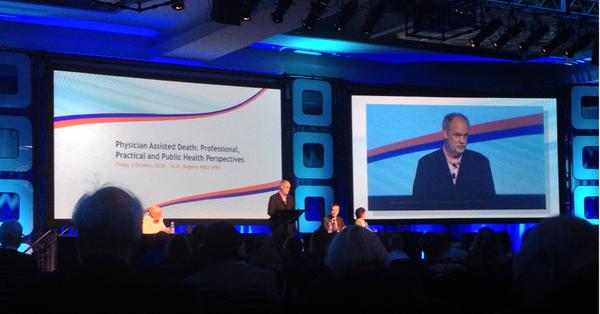Key points of the talks included:
- 29% of Canadian doctors would participate in PAD.
- 50% of patients in palliative care have a mental health disorder
- Evidence showed that PAD actually leads to increased utilization of palliative care.
- Some argued that there is no slippery slope, and in countries/states already employing PAD, the right to dying with dignity has not been abused
- Many psychiatrists are concerned about finding the right balance between enabling death with dignity, while protecting patients from suicide and self-harm.
- Most palliative care physicians do not want to be involved in PAD.
- In Oregon, 1/3 of patients requesting PAD, never use the prescribed medication, but patients want to have the option of having control over their final days.
- Language is crucial, not only for setting guidelines or criteria for who has the right to die, but also in how we describe and refer to PAD as. Is a term such as "physician hastened death" preferable to "physician assisted suicide"?

 RSS Feed
RSS Feed
